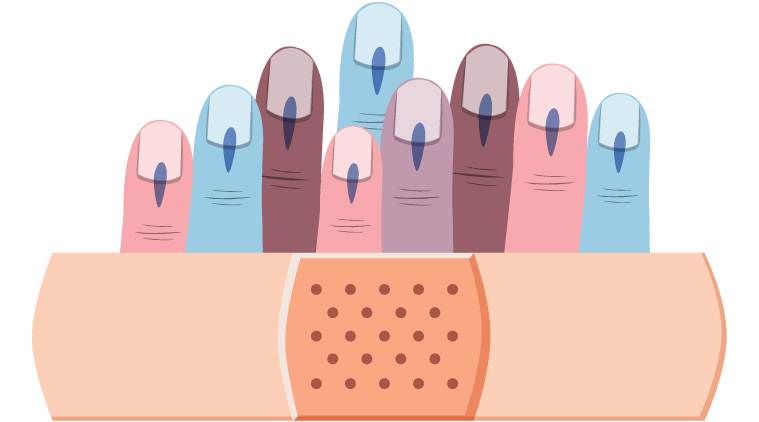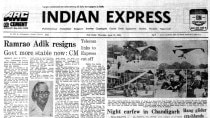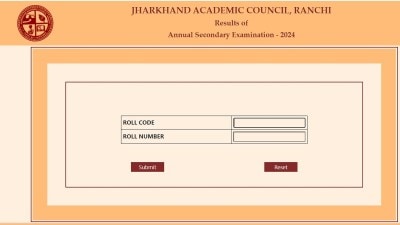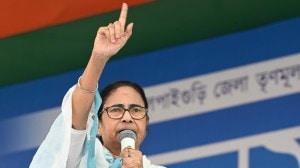- India
- International
Desire to provide equitable healthcare will reinforce to voters that they matter to politicians
Equity in healthcare will unequivocally impact everyone, most of all the ones who are at risk of diving deeper into poverty from a catastrophic illness.
 A country ranked 112/164 in per capita income must be cognisant of such disparities and health expenditures that push individuals and families, some in middle and upper middle class, deeper into poverty.(Illustration: CR Sasikumar)
A country ranked 112/164 in per capita income must be cognisant of such disparities and health expenditures that push individuals and families, some in middle and upper middle class, deeper into poverty.(Illustration: CR Sasikumar)
As THE COUNTRY VOTES for a new government, equitable and accessible healthcare is being talked about. The next big promise of healthcare for the poor is pitched to be the Pradhan Mantri Jan Arogya Yojana (PMJAY). The proposed plan, while facilitating access to a subset of the population, will cost roughly $1.7 billion. However, the PMJAY, which promises health through insurance for millions of vulnerable Indians, will do little to strengthen our public sector while redirecting spending to the unregulated private sector. As the decibel level from the campaign soars, it is time to place comprehensive healthcare reform on the agenda for change. With only weeks left for voting to conclude, it is critical to understand the role of healthcare in alleviating poverty and improving human development.
An average Indian lives about 10 years less than an American. Since Independence, India’s life expectancy, which was 31 years, has increased about by six months every year. While it stands at 68 today, it is strikingly non-representative of any particular state. An average Keralite lives to around 75 years, while an Assamese resident lives to about 63 years. Therefore, an Indian national could live 10 years more or less simply based on his/her geography. A country ranked 112/164 in per capita income must be cognisant of such disparities and health expenditures that push individuals and families, some in middle and upper middle class, deeper into poverty. We ought to be enhancing our existing infrastructure, promoting and reinforcing excellence in care within government centres rather than diverting public funds into private health enterprises. A catastrophic illness is often the inflexion point for many households in India, and they may be well above the government cut off for the PMJAY scheme.
The Health Survey and Development Committee or the Bhore committee from 1943 established the framework for our healthcare system. Barring some iterations, the fundamental design has remained the same. However, the past few decades have seen stagnant public-sector spending along with the exponential growth of the private sector. While total spending on health as a portion of India’s GDP stands around 3.9 per cent (World Bank data), public spending as part of our GDP stands just above 1 per cent, with a proposed plan to double it by 2025. Consequently, out-of-pocket expenditure for health stands at a worrying 70 per cent, notwithstanding the government provisioning universal health coverage. In stark contrast, the Kenyan government spends about 3.5 per cent of its GDP on health while Brazil and the US spend 8.9 per cent and 16.8 per cent respectively. In terms of per capita cost, India spends about Rs 1,112 per person (about $15), while Switzerland and the US spend $6,944 and $11,193 respectively. There is a clear prioritisation away from those who need healthcare services the most, in terms of spending patterns in the last few decades.
Another critical area of concern adversely impacting the public health sector is the dearth of human resources. Unfortunately, any consideration of alternate human resources such as nurse practitioners have failed to gather momentum. The rural health statistics report show that 8 per cent of primary health centres (PHCs) function without a doctor, 38 per cent without a lab technician and 22 per cent without a pharmacist. At the community health centre level, there was a considerable shortage of specialist allopathic doctors. The Higher-Level Expert Group (HLEG) for universal health coverage put forth by the then Planning Commission recommended a doctor-population ratio of 1:1,000, identical to WHO recommendations.
Interestingly, India’s national average stands at 1:921 for allopathy and AYUSH (ayurveda, yoga and naturopathy, unani, siddha and homoeopathy) combined, and 1:1,586 for allopathy alone. While six states — Delhi, Karnataka, Kerala, Goa, Punjab and Tamil Nadu — have numbers better than the national average, several states including Jharkhand (1:8,180), Haryana (1:6,037) and Uttar Pradesh (1:3,767) have a horrific doctor-population ratio. In 2004, the Ministry of Health and Family Welfare suggested that each government doctor catered to roughly 15,980 people. This is particularly relevant to an estimated 68 per cent of individuals in rural India, who depend on the government machinery to access quality health services. A 4:1 distribution of health workers favouring urban India adds to this inequity and serves to expose how blatantly non-representative our national metrics are.

Public spending should also be geared to improving the quality of medical education. Technology should be brought in as a tool to enhance the student experience. The growth of the private sector has witnessed an explicit rise in the number of private medical colleges. Sadly, the distribution of many of these colleges follow the urban landscape, likely for financial incentives. During this time, public medical colleges, while growing in modest numbers, suffer from dilapidated conditions in terms of funding, infrastructure, quality of academic scholars, in-house research and the lack of a larger ecosystem that prioritises world-class medical education and research. Consequently, the QS world rankings fail to feature a single Indian medical institution in the top 100 medical schools despite having 579 odd medical colleges that produce about 52,000 doctors each year.
The exodus of our health personnel (both trainees as well as graduates) has a deleterious impact on our health system as well. One-fourth of all medical providers across disciplines in the US are foreign born and many are from India. In the long term, improving medical education and academic scholarship within public institutions and a significant expansion of private, not-for profit, and philanthropically-enabled medical schools and public health schools will help create a better healthcare system. It will limit students flocking to other nations for better education, and hopefully bring about a reversal. A critical area of growth would be creating space for not-for-profit medical institutions of international standards to not only close the academic and infrastructure gaps but also to address the exploding human resource crisis in the health sector.
The need for world class institutions of excellence and breaking into world rankings is not just a matter of pride for a country of 1.3 billion people, it is critical to creating a workforce that is adept in meeting the challenges of tomorrow. There is an economic benefit from the mitigation of loss of billions of dollars to overseas institutions. It will prevent the debt that many students and families incur in their quest for higher education as well as the disruption of life from unstable geopolitical climate in the country of immigration. It will certainly address our own human resource crisis in health services. Re-directing public funding and re-invigorating our public sector to create an equitable, sustainable healthcare system for all remains our top priority and our greatest challenge.
There are numerous challenges that face the average voter this election. Our diversity in language, religion, culture and demographics pose intrinsic challenges of their own. Yet, equity in healthcare will unequivocally impact everyone, most of all the ones who are at risk of diving deeper into poverty from a catastrophic illness. Equitable healthcare will restore social justice and will reinforce to the average voter that s/he matters and does so equally in the eyes of the government
This article first appeared in the April 30, 2019 print edition under the title ‘A Healthy Signal’
Ravikumar is a public health scholar and a psychiatrist at Veteran Affairs Medical Center, St Louis, USA and Raj Kumar is the founding vice-chancellor of O P Jindal Global University
EXPRESS OPINION
More Explained
Apr 19: Latest News
- 01
- 02
- 03
- 04
- 05









































